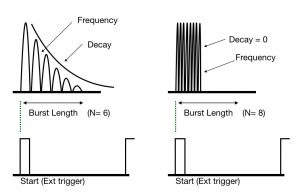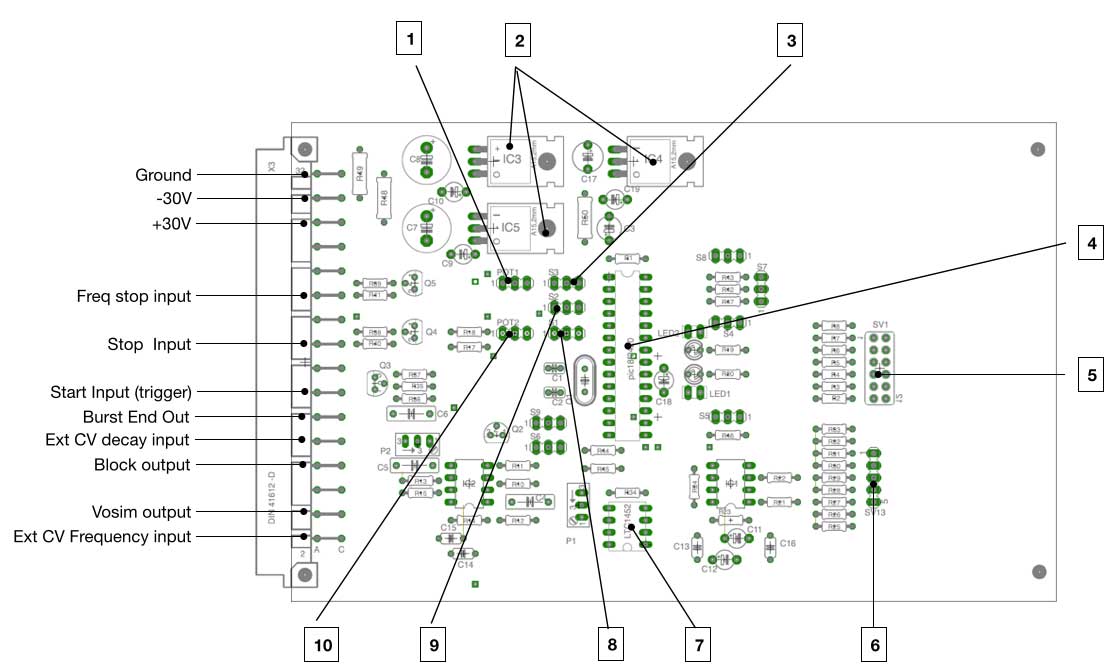 The Vosim is a burst generator. It generates adjustable bursts of sine-waves. Take a look at the picture. On the left-down you see a start pulse, or an external trigger. This generates (triggers) the sinewave burst you see on top. Of this burst, you can set 3 variables: the frequency of the burst (F), the decay (D), and the burst-length (N). On the right side you see a burst with a higher frequency and the decay is set to 0. In this version the maximum burst length is set to be 12.
The Vosim is a burst generator. It generates adjustable bursts of sine-waves. Take a look at the picture. On the left-down you see a start pulse, or an external trigger. This generates (triggers) the sinewave burst you see on top. Of this burst, you can set 3 variables: the frequency of the burst (F), the decay (D), and the burst-length (N). On the right side you see a burst with a higher frequency and the decay is set to 0. In this version the maximum burst length is set to be 12.
These 3 variables (F, D, N) can be changed with an external voltage (control voltages) or with local potentiometer mounted on a frontpanel. Control voltages vary between 0V-5V. The selection of the source for the control voltages is made with a switch (internal/external or int/ext).
Below the picture of the printed circuit board. It is designed based upon our analogue studio where we have the standard of mounting circuits on a eurocard format printed circuit board and with 32 pins rack-connectors, so servicing these boards is made a lot easier. All in’s and out are available on this multi-connector – see the description in the figure. The numbers refer to where to connect which component.

1 = Frequency potmeter (+5V, Wiper, GND)
2 = Voltage regulators (7812, 7912, 7805)
3 = Switch connection to choose between int/ext frequency
4 = Micro-controller
5 = This extended switch can switch between different frequency ranges.
6 = Burst length setting (n=1 … n=12)
7 = DA-convertor
8 = Decay switch int/ext
9 = Burst length int/ext
10 = Decay potmeter (+5V, Wiper, Gnd)
Since these boards are designed to work with +30V/-30V, the two onboard voltage regulators convert the voltage down to +12V/-12V and +5V (vcc). All signal calculations are done by the processor (PIC18F2420) – the big chip in the middle. We program these chips to be a ‘Vosim’. The actual burst is generated by a good quality 10 bits one channel DA converter (LTC1452). In between the output of this DA converter and the outside world (your devices) there is one opamp acting as a buffer.
The data for the signals are generated by the processor and there are also some extra outputs available: block out, and the burst-length (amount of pulses). We also make burst generators with this boards, so it can be that some label-names refer to a function that is actually not embedded in this (program) version.
